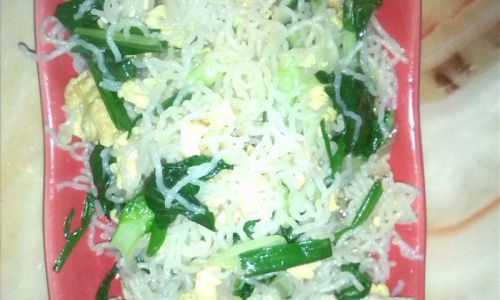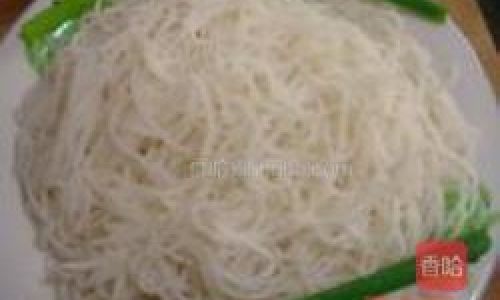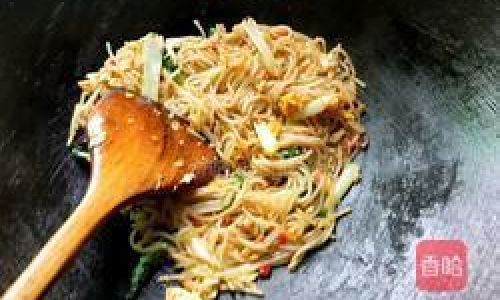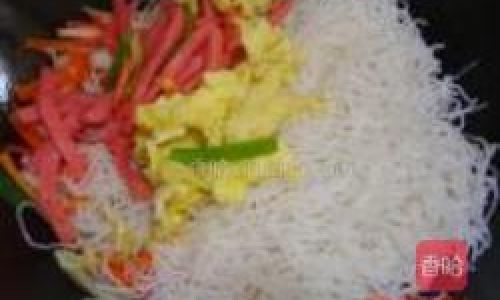Introduction
Fried rice noodles, known in Chinese cuisine as Chaomisi, are a beloved dish that bridges simplicity and complexity. Originating from Southern China, this versatile meal has transcended borders, becoming a staple in households and restaurants worldwide. At its core, Chaomisi is a symphony of textures and flavors—silky noodles intertwined with tender vegetables, aromatics, and proteins, all bound together by a delicate balance of savory sauces. What makes this dish truly remarkable is its adaptability; whether you’re a seasoned chef or a novice cook, mastering Chaomisi offers a gateway to exploring the nuances of stir-frying, a cornerstone of Asian culinary techniques. This article delves into the art of crafting authentic Chaomisi, from selecting the finest ingredients to executing flawless cooking techniques. By the end, you’ll not only have a recipe to follow but also the knowledge to improvise and make the dish your own.
The Essence of Chaomisi
Chaomisi translates to “stir-fried rice noodles,” a name that belies the dish’s depth. Unlike its cousin, chow mein, which uses wheat noodles, Chaomisi relies on rice vermicelli—thin, translucent strands that absorb flavors without becoming mushy. The dish’s charm lies in its harmony: each component—noodles, protein, vegetables, and seasonings—plays a distinct role. The noodles provide a neutral canvas, the proteins add substance, the vegetables contribute freshness, and the sauces tie everything together with umami-rich notes.
Ingredients: Building Blocks of Flavor
To create a memorable Chaomisi, start with quality ingredients. While the recipe is flexible, certain elements are non-negotiable for authenticity.
Noodles
- Rice Vermicelli: Opt for dried rice noodles, typically labeled “rice sticks” or “rice vermicelli.” Soak them in cold water for 30–45 minutes until pliable but not brittle. Avoid over-soaking, as this leads to mushy noodles.
- Alternative: Fresh rice noodles (available in Asian markets) can be used but require less cooking time.
Aromatics

- Garlic: 4–5 cloves, minced. Garlic forms the flavor base, so freshness is key.
- Ginger: 1-inch piece, grated. Adds a subtle warmth.
- Shallots or Onions: 2–3 shallots or half a small onion, thinly sliced.
Vegetables
- Carrots: 1 medium, julienned. Adds sweetness and crunch.
- Cabbage: 2 cups shredded. Use Napa or green cabbage for tenderness.
- Bell Peppers: 1 small, thinly sliced. Optional, but adds color and texture.
- Bean Sprouts: 1 cup, rinsed. Provides freshness and a slight crunch.
- Green Onions: 3–4 stalks, chopped. Use both white and green parts.
Proteins
- Shrimp: 8–10 medium, peeled and deveined.
- Chicken: 1 boneless, skinless breast, thinly sliced.
- Tofu: 1 cup firm tofu, cubed (for vegetarian/vegan versions).
- Eggs: 2 large, lightly beaten. Scrambled eggs add richness.
Sauces and Seasonings
- Soy Sauce: 3–4 tbsp. Use light soy sauce for saltiness; dark soy sauce adds color.
- Oyster Sauce: 1–2 tbsp. For depth and sweetness.
- Sesame Oil: 1 tsp. Toasted sesame oil enhances aroma.
- White Pepper: ¼ tsp. A pinch elevates the dish.
- Sugar: ½ tsp. Balances saltiness.
- Chicken or Vegetable Broth: 2–3 tbsp. Optional, for moisture.
Oil
- Peanut Oil: 2–3 tbsp. High smoke point ideal for stir-frying.
- Alternative: Vegetable or canola oil.
Step-by-Step Preparation
Prepping the Noodles

- Soak dried rice noodles in cold water for 30–45 minutes. Drain and toss with 1 tbsp of oil to prevent sticking.
- Pro Tip: If using fresh noodles, separate them gently to avoid clumping.
Marinating Proteins (Optional)
- For shrimp or chicken: Marinate in 1 tbsp soy sauce, 1 tsp cornstarch, and a pinch of pepper for 15 minutes. This tenderizes the meat and locks in flavor.
Prepping Vegetables
- Julienne carrots, slice cabbage, and chop green onions. Keep bean sprouts separate, as they cook quickly.
Cooking the Eggs
- Heat 1 tbsp oil in a wok or large skillet over medium-high heat. Pour in beaten eggs and scramble until just set. Remove and set aside.
Stir-Frying Aromatics
- Add 1 tbsp oil to the wok. Sauté garlic, ginger, and shallots until fragrant (30 seconds). Avoid burning, as this imparts bitterness.
Cooking Proteins
- Increase heat to high. Add marinated shrimp or chicken and stir-fry until cooked through (2–3 minutes). For tofu, pan-fry until golden. Remove and set aside.
Stir-Frying Vegetables

- Add carrots and bell peppers to the wok. Stir-fry for 2 minutes, then add cabbage. Toss until wilted but still crisp (1–2 minutes).
Combining Noodles and Sauces
- Push vegetables to one side. Add noodles and remaining oil. Drizzle soy sauce, oyster sauce, and a splash of broth over the noodles. Toss gently to coat.
Integrating Flavors
- Add cooked proteins and eggs back to the wok. Sprinkle sugar and white pepper. Toss everything vigorously for 2–3 minutes until noodles are evenly coated and slightly caramelized.
Final Touches
- Fold in bean sprouts and half the green onions. Drizzle sesame oil and toss once more. Remove from heat.
Serving
- Garnish with remaining green onions and a sprinkle of sesame seeds. Serve immediately with lime wedges or chili sauce on the side.
Tips for Perfect Chaomisi
Mastering the Wok

- A carbon-steel wok distributes heat evenly, essential for high-heat stir-frying. If unavailable, use a large skillet.
- Preheat the wok until smoking hot before adding oil. This prevents sticking and sears ingredients quickly.
The Art of Tossing
- Use a spatula and long chopsticks to toss ingredients. This ensures even cooking without crushing delicate noodles.
Avoiding Sogginess
- Overcrowding the wok lowers the temperature, leading to steaming instead of stir-frying. Cook in batches if necessary.
- Ensure noodles are drained thoroughly after soaking.
Balancing Flavors
- Taste and adjust seasonings before serving. Add a splash of vinegar for acidity or a pinch of sugar to mellow saltiness.
Vegetarian Adaptations
- Substitute tofu for meat and use vegetarian oyster sauce. Add mushrooms or edamame for extra texture.
Common Mistakes to Avoid
- Overcooking Noodles: Soak until pliable, not soft.
- Underseasoning: Chaomisi relies on layered flavors; don’t skimp on sauces.
- Using Low-Quality Oil: Peanut oil’s high smoke point is crucial for high-heat cooking.
- Skipping Aromatics: Garlic and ginger are flavor pillars; don’t omit them.
Variations and Customizations
Chaomisi thrives on creativity. Experiment with:

- Proteins: Beef, pork, or seafood (squid, mussels).
- Vegetables: Snow peas, bok choy, or spinach.
- Spice: Add chili flakes, Sriracha, or fresh bird’s-eye chilies.
- Nuts: Garnish with crushed peanuts or cashews for crunch.
Cultural Significance
Chaomisi is more than a meal—it’s a testament to resourcefulness. Born from humble beginnings, it transforms leftover ingredients into a feast. In Southern China, street vendors perfected the dish, tossing noodles in woks over portable burners, their sizzling aromas drawing crowds. Today, it symbolizes the fusion of tradition and innovation, a dish that honors its roots while embracing global palates.
Conclusion
Crafting the perfect Chaomisi is an exercise in patience and precision. Each step—from soaking noodles to balancing sauces—contributes to the final masterpiece. Whether you prefer it spicy, vegetarian, or loaded with seafood, the dish invites you to express your culinary personality. So, grab your wok, gather your ingredients, and embark on a journey to master this timeless classic. Your taste buds—and your dinner guests—will thank you.






0 comments